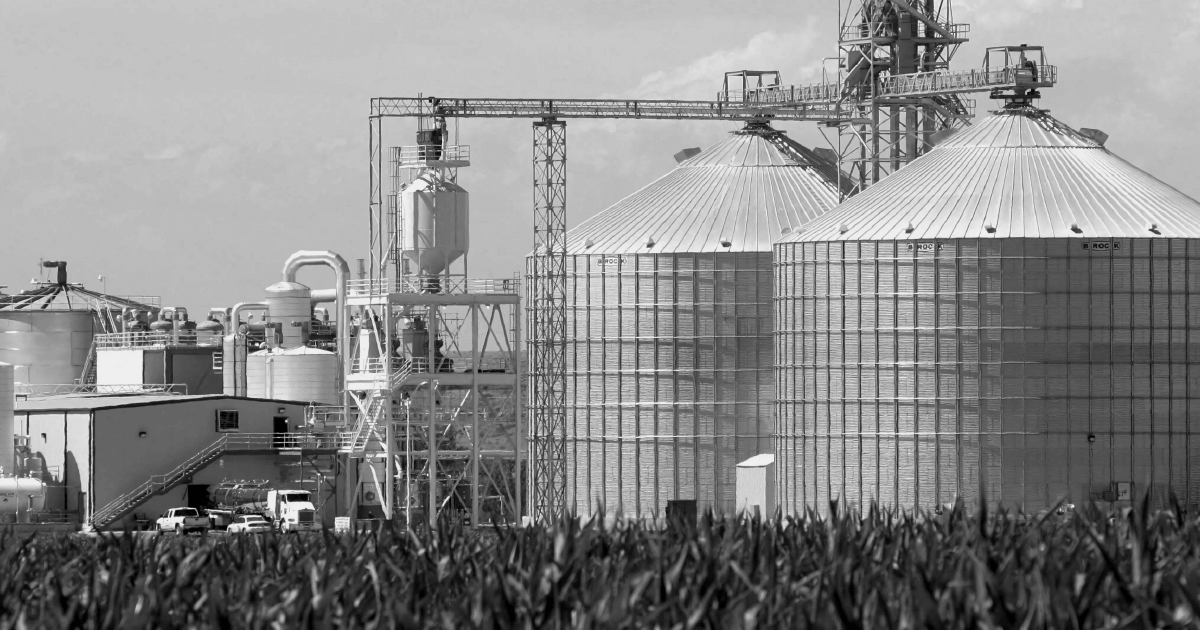Ethanol fuel is an introduction to the world’s first renewable fuel for automobiles. The government RFS mandate and the favorable incentives are encouraging fuel stations to adopt blended fuels, such as E15 and E85, although the most common is the E10 blend which is a mixture of 10% ethanol and 90% gasoline.
However, ethanol’s growing popularity should not come as a surprise. Not only is it much more environmentally friendly than other fossil fuels, but ethanol fuel also has advantages for the local economy and agricultural sector.
So, what is ethanol fuel?
TABLE OF CONTENTS

Understanding Ethanol
Ethanol has long since been in use in various forms, including beverages, medical attention, and now fuel systems, but what gives it the distinct properties that allow it to function optimally in so many different forms?
What is Ethanol?
Ethanol is ethyl alcohol, an alcohol from the organic chemical group, with the hydroxyl group in the end -OH. The same kind of ethanol is used in beverages, industrial applications, and bioethanol fuel.
Ethanol fuel is also one of the cleanest fuels out there, where it’s produced mainly from plant-based materials, by breaking down the starchy components and converting them to alcohol, which is then used to power engines. The growth of the plants makes the production of fuel roughly carbon neutral while resulting in a cleaner fuel content.
Types of Ethanol Blends
The most common ethanol blends are E10, E15, and E85. In the expression, “E” stands for ethanol and the number next to it shows its concentration in percentage.
Higher blends like E85, which contain 85% ethanol, are used mainly in flex-fuel vehicles that can handle high ethanol concentrations. Meanwhile, E10 and E15 are considered safe and efficient for all types of vehicles manufactured after 2001.
Although ethanol blends reduce greenhouse gas emissions, higher ethanol content, such as E85, has raised concerns about reduced fuel efficiency and environmental impacts due to air pollution.
How Ethanol Fuel is Made
Plant-based materials like corn and sugarcane, are fermented by yeast to produce ethanol fuel. Ethanol production through corn has an extra step, where it’s heated with water to break down the starch and convert it to sugar.
The second generation of ethanol is a bit more complex. The process makes use of agricultural waste and non-food material, where the cellulose in the plants is broken down by enzymes before it can be fermented. The term “second generation” refers to the extra step in manufacturing this type of ethanol fuel, since the raw plant material needs to be converted to sugar first, before its conversion to ethanol.
But what is bioethanol fuel? Once ethanol is produced, it is purified and mixed with gasoline to make bioethanol fuel.
Why Use Ethanol Fuel?
Although switching to bioethanol fuel might feel like a major decision, you’ll be surprised to know about the benefits it offers.
Environmental Benefits of Ethanol Fuel
With bioethanol fuel, carbon monoxide emissions are reduced by 30%, as compared to gasoline and particulate matter by 50%, effectively leading to cleaner air. This is due to a more complete combustion of ethanol in the engine than gasoline and the overall clean fuel content.
It also controls the release of harmful substances through your pipe, like benzene and VOCs.
Renewability and Sustainability
Crops that produce bioethanol fuel are grown each year, giving us a renewable source of energy.
When you compare them to fossil fuels like gasoline and diesel, they are made from decaying plant matter pressed under the earth for millions of years. This means that if you run out of them today, you might not be able to use them in your lifetime again.
Economic Benefits and Energy Independence
Apart from environmental benefits, countries finally have a chance to gain energy independence, if they opt for ethanol fuels. The agriculture sector can grow their own cornfields and sugarcane or make use of their waste to produce ethanol fuel, avoiding expensive imports of gasoline and diesel, while boosting the local economy.
Using Ethanol Fuel in Vehicles
Despite the government mandate of encouraging ethanol blends, where low concentrations have been deemed safe for most cars, consumers are still hesitant to adopt the fuel. Is it the dilemma of lower carbon content, or the safety of the fuel with regards to your vehicle?
Let’s have a closer look at how bioethanol works within different vehicles and help clear your doubts.
Flex Fuel Vehicles (FFVs)
Flex fuel vehicles have an engine control unit with a sensor that detects the ethanol-to-gasoline ratio and adjusts its performance according to the fuel in the tank.
This makes it compatible with gasoline and ethanol, as the ECM controls the injection and ignition within the engine, where the delay is slightly longer than in gasoline engines.
Since ethanol is corrosive, the engine parts are equipped to handle its chemical properties, which may be more hardy than you see in gasoline vehicles.
Compatibility with Conventional Vehicles
Most gasoline vehicles can run fine on low blends of ethanol fuel like E10 and E15 without experiencing any difficulty. The corrosive nature of ethanol fuel is toned down while its higher octane rating gives the gasoline a boost and starts the engine earlier.
When you use higher blends of ethanol like E85, fuel efficiency will drop, as the engines are not equipped to work with ethanol and the fuel can lead to corrosion of its different parts.
Impact on Engine Performance and Maintenance
E15 was considered safe to use on ordinary vehicles manufactured after 2001. However, it can slightly increase the maintenance schedule of your vehicle, due to its corrosive nature and reduced fuel efficiency in conventional vehicles.
Moisture-absorbing properties of ethanol fuel can lead to fuel contamination, but it can also make it easier to clean while preventing fuel line freezing in winter.
The Production and Sustainability of Ethanol Fuel
The sources of ethanol fuel can be divided into two main categories:
- 1st generation or plant-based, including corn, maize and sugarcane
- 2nd generation, mainly agricultural residue and cellulosic biomass
The efficiency of plant-based ethanol fuel is slightly higher than the one produced by the second generation since the technology is better and the process is quite straightforward when it comes to manufacturing. Although some cellulosic ethanol has a better energy return on investment than the one produced by corn. However, its efficiency remains lower than sugarcane ethanol.
A carbon neutrality factor that comes into play when farming for biofuel crops. Their durable nature allows them to grow on degraded land, but it can also reduce the amount of carbon in soil, affecting its overall health. The use of fertilizers and high water demand can cause both land and water pollution.
Since more land is being designated for the growth of biofuel crops, it is reducing the land for food growth forcing farmers to spread agricultural lands further into the forest, increasing deforestation. Third-world countries may not even have the resources to do so, especially regions that have an arid climate, leading to food shortages.
It’s a good thing that continuous advancements are taking place, like CRISPR Technology and gene editing, to increase fuel crop’s durability and improve their efficiency. Scientists are also working on synthetic microbes that will directly convert CO2 into ethanol, helping with the greenhouse effect and reducing the overall carbon footprint.
Ethanol Fuel vs. Gasoline
Cost and Fuel Economy
Gasoline has a higher cost per gallon than ethanol, but has a higher fuel efficiency.
However, ethanol fuel can still be cheaper than gasoline since it’s not about the miles per gallon but the miles driven. If you are getting 70% of the distance done at half the price due to government incentives, it becomes obvious that ethanol fuel will be the wiser choice between the two.
Emission Levels and Environmental Impact
The composition of emissions may change with the concentration of ethanol present in the fuels, but ethanol blended fuels still reduce the impact on the environment. This is due to the carbon neutrality factor in ethanol as well as less concentration of VOCs, particulate matter, and benzene, making it a cleaner solution than gasoline.
Availability and Infrastructure
The accessibility of ethanol is improving day by day, thanks to favorable government mandates. However, its distribution is still not as widespread as it should be, proving to be a challenge for FFV owners, where they might find themselves searching for “E85 near me” or “bio ethanol fuel near me”.
You are more likely to find ethanol fuels near its production place, although it is becoming more widely available than it was back in the day.
Apart from that, the reluctance of people to adopt ethanol fuel because of its perceived inefficiency also adds difficulties in its distribution.
Debunking Myths About Ethanol Fuel
Bioethanol fuel, especially the ones with low concentrations is perfectly fine for conventional engines manufactured after 2001 and the government RFS mandate proves that. With the onset of flex-fuel vehicles, the fuel is becoming more widespread, as the vehicle is flexible enough for both gasoline and ethanol.
You might find ethanol fuel easier on your budget than gasoline because the slight MPG difference is hardly noticeable. Since the biofuel crops are resilient enough to grow in challenging environments, it allows them to be grown on degraded grounds, saving land resources for food crops. Cellulosic ethanol is even better, as it also makes use of agricultural waste.
Key Takeaways
Although there might be many misconceptions about ethanol fuel, perhaps now you know the truth. Ethanol is not only environmentally friendly with its carbon-neutral factor, but it also helps the local economy and the agriculture sector grow.
It is a renewable source of energy, one that you can see in your lifetime being reproduced year after year, instead of being worried about the future of your generations with fossil fuels.
FAQs
Is ethanol a better fuel than gasoline?
Ethanol is better for the environment than gasoline, and more cost-effective for your vehicle, but gasoline has slightly better efficiency than ethanol and gives better performance.
Is ethanol fuel good for your car?
The fuel is great for your car, if it’s compatible with its engine and you are taking good care of it.
What are the disadvantages of using ethanol as a fuel?
Ethanol is less efficient than gasoline and less compatible with vehicles other than FFVs. The fuel also might not be accessible in all areas, although this is rapidly changing.
Can cars run on 100% ethanol?
Yes they can, but only if it’s a flex fuel vehicle, since the engine is able to detect the composition of the fuel and adjusts its mechanism and power accordingly.
What’s the difference between E10, E15, and E85?
The numbers show the concentration of ethanol in each of the fuels, where E10 has 10% ethanol, E15 has 15% and E85 has 85%.
Fuel Your Needs with Reliable Delivery from Fuel Logic
Looking for reliable fuel delivery? Fuel Logic has you covered! From high-quality fuel delivery services tailored to your needs to a detailed comparison of blended vs. unblended fuels, we ensure you get the right fuel every time. Whether you’re curious about recreational fuel or need to know the 3 types of fuel and their uses, we’ve got the resources to help. Our services are available across multiple locations, and our comprehensive FAQ answers all your questions. Ready to fuel up? Call Fuel Logic or easily order fuel online. Visit Fuel Logic today to explore more.


